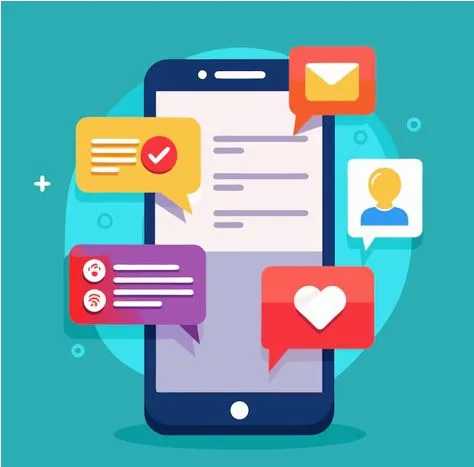How SMEs Can Scale Faster with Automation Messages
If your business is small, at some point, you’ve asked yourself: how can you improve and optimize the way you manage your customer service? Fortunately, this problem has already been solved, as automated messages are now available. These are responsible for establishing dynamic, real-time conversations, so they’re an effective program that helps more companies communicate seamlessly with their customers. The evolution of business is definitely here, toward automated, personalized communication tailored to customer needs.
In general, it’s the preferred tool for small and medium-sized businesses because it offers greater benefits: saving time by automating repetitive tasks, reducing costs by eliminating the need for multiple human agents, improving response times and customer satisfaction with real-time responses, maintaining brand consistency through personalized communication, and increasing sales by generating appropriate and fluid follow-up.
As we know, more information is needed to convince you, so we’ll provide you with an in-depth explanation of how your SME can scale quickly thanks to message automation.
Join us!
Best Use Cases of Automation Messages in SMEs
The best way to unlock a tool’s potential is to understand its use cases. In this post, we’ll share the best use cases for automated messaging for small and medium-sized businesses.
Customer support and FAQs
The basic use you can give this tool is to process your customer service. You can create a continuous support system where you can send and answer frequently asked questions, welcome and farewell messages, and guide the consumer toward their purchase goal.
Order confirmations and delivery updates
Ideally, you want to increase customer satisfaction. To achieve this, it’s best to create an automated support system where you can send order confirmations and delivery updates. This way, no one is left in the dark, and you generate greater consumer trust and loyalty.
Lead nurturing and follow-up campaigns
Among the most important actions in any business is the possibility of growth. This requires keeping potential customers engaged. Therefore, one way to use message automation is by managing follow-up campaigns to corroborate customer actions and perform appropriate lead nurturing to increase conversions.
Re-engagement and retention strategies
Creating dynamic messages isn’t all about; certain strategies are also necessary to increase customer loyalty. Therefore, an effective use of automation is to create loyalty and re-engagement campaigns to recapture those forgotten customers and demonstrate to them the value they bring to the company.
Tools to Help You Implement Automation Messages
Now that you know how to use this tool, you should know that to achieve these results, you have certain tools that help you implement automated messages. We’ll tell you which ones.
CRM systems and integrated chat tools
CRM is the central system that every business (large or small) needs. This is relationship management software that analyzes, manages, and optimizes customer data to create first-class customer service.
Another essential tool you need is integrated chat tools, which improve communication and productivity for your team. Not everything has to be for the benefit of your customers; it’s also important to consider your team’s work.
WhatsApp and Instagram automation solutions
Working with social networks like WhatsApp and Instagram in an automated way is a great strategy for serving a large number of customers at a reduced cost. For example, one way to benefit is with Instagram comment automation. This feature allows SMEs to:
- Respond instantly to customer inquiries.
- Send follow-up messages and maintain engagement.
- Create advanced support without constant manual effort.
AI-powered chatbots and smart triggers
Automated messages need to be integrated with an intelligent tool to function optimally. One of the best is AI chatbots, which can create first-class support, mainly because they are capable of integrating with efficient channels like WhatsApp. So, once you operate a WhatsApp chatbot, you create a successful conversational flow with smart triggers to avoid missing out on opportunities.
How to build a chatbot in Kommo
How to Set Up Automation Messages Step by Step
Now let’s look at the step-by-step process for setting up automated messages and starting to experience the success you desire in your business.
Step 1 – Identify key customer touchpoints
Automated messages should be used strategically. This means that, as a business, you must know the key points where your customers require immediate, automated assistance. So, you can delegate the rest of the support to human agents.
Step 2 – Choose the right automation platform
To create the ideal support experience, you need to work with the right team. That said, the second step you should take is to select the automated platform that can process the support you want. In our case, we recommend Kommo, a conversational software ideal for small and medium-sized businesses.
Step 3 – Create personalized message templates
After selecting and integrating the ideal platform, it’s time to create the respective messages that will be sent. You can create these using custom templates, so they strike the perfect tone for your brand and, above all, ensure they’re appropriate for your customer service vision.
Step 4 – Test automation flows before launch
Once you have your templates, it’s time to test your messages and how your automated flow performs. For this, there are free artificial intelligence platforms that can recommend improvements or even simulate a customer so you can see how your dialogues would work. A notable example is ChatGPT.
Step 5 – Track performance and refine communication
Finally, all you have to do is launch and test your automated messages in real time. Once you do this, keep in mind that you need to constantly monitor their performance. This way, you can ensure your service is working properly and, in addition, you can refine your communication.
Final Thoughts: Scaling Smart with Automation Messages
With the information we’ve provided in this article, you’ll see that message automation is indeed an excellent strategy for SMEs to scale and achieve the expected results without large budgets or excessive IT knowledge. All you need to do is be aware of the type of service you want to provide and the potential you want your company to achieve.
Don’t wait any longer and start working smarter with this technology. Integrate it now and start seeing better results in the short and long term.





